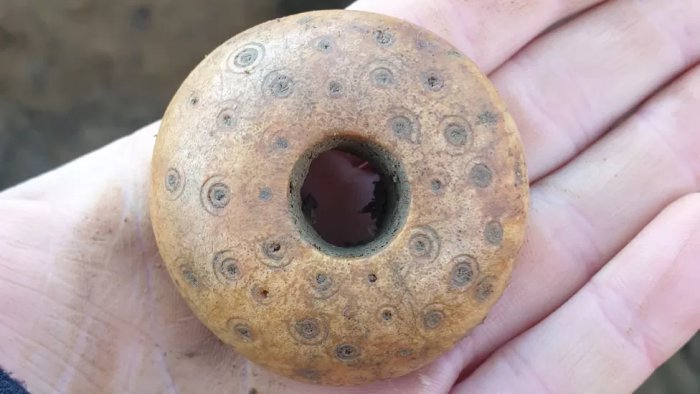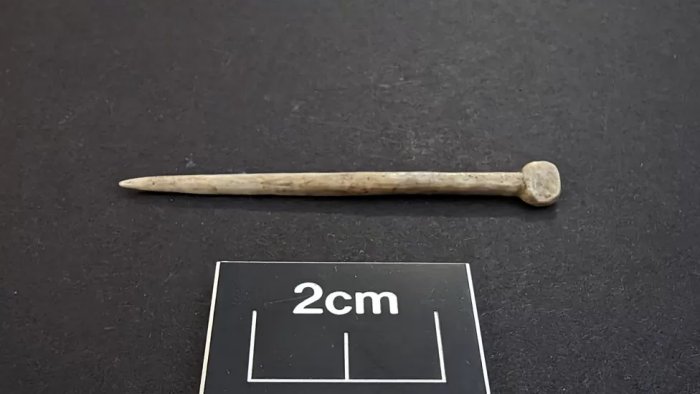Jan Bartek – AncientPages.com – When Britannia Archaeology experts started excavating near Ely, Cambridgeshire, UK, they thought it would be a short project, but they were wrong. The scientists have been digging at the site for nearly a year, and the research team has found evidence that people have occupied this place for thousands of years.
The latest archaeological discovery is impressive and reveals there is still much to be learned about the site, which is due to be turned into housing by Orbit Homes, in October.

Part of the unearthed building. Credit: Britannia Archaeology
Archaeologists report they have unearthed a previously unknown Saxon village with a large hall. They have also found an intact Bronze Age pot, and a number of other artifacts such as thatch weights, bone pins, combs, weaving implements, knife blades, and pins.
According to scientists, the craftsmanship of the artifacts is exceptional, and these types of objects are not something archaeologists find often.
“Normally we find fragments of pots which are a bit smashed and broken. We don’t usually get a whole vessel that’s 95% complete and still standing,” Project manager and archaeologist Alice Schute told the BBC.

When archaeologists lifted the Bronze Age pot, they thought it would break, but it remained intact. Credit: Britannia Archaeology
Researchers thought the pot’s sides to cave in as they retrieved it from the earth, but to everyone’s delight, the ancient object remained intact.
Based on the evidence unearthed until now, scientists have concluded that “the site was occupied right up until the Roman period and then was apparently abandoned until the 4th or 5th Century AD village was built.

Many Saxon bone spindle whorls were uncovered, providing evidence of cloth weaving. Credit: Britannia Archaeology
According to Martin Brook, Britannia Archaeology director, at least 20 buildings have been excavated, including a “substantial hall,” and they are believed to be part of a much larger Saxon settlement.
“What’s special about the village is we’ve got sunken feature buildings, like those recreated at West Stow in Suffolk.
Other buildings were dug even deeper below ground, up to 80cm (31in), and have revealed evidence of industrial use.

One of many intriguing artifacts unearthed at the site. All items will be sent for analysis. Credit: Britannia Archaeology
“We have found loom weights, spindle whorls, needles, and tiny, tiny beads – blink and you’d miss them,” she said.
“You think, ‘somebody last touched this thousand of years ago,’ yet some of these artifacts look like they could have been created yesterday,” Schute added.
See also: More Archaeology News
As reported by the BBC, archaeologists will continue the excavation until Christmas, and then post-excavation analysis will begin.
How many more precious ancient artifacts are hidden beneath the soil remains unknown, but as Schute said, “the site’s important to local history, but it has a much wider significance – nobody knew it was here.
Written by Jan Bartek – AncientPages.com Staff Writer





